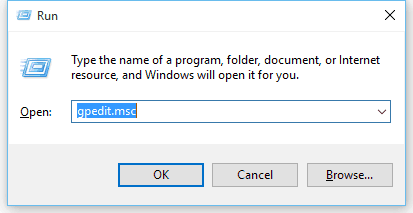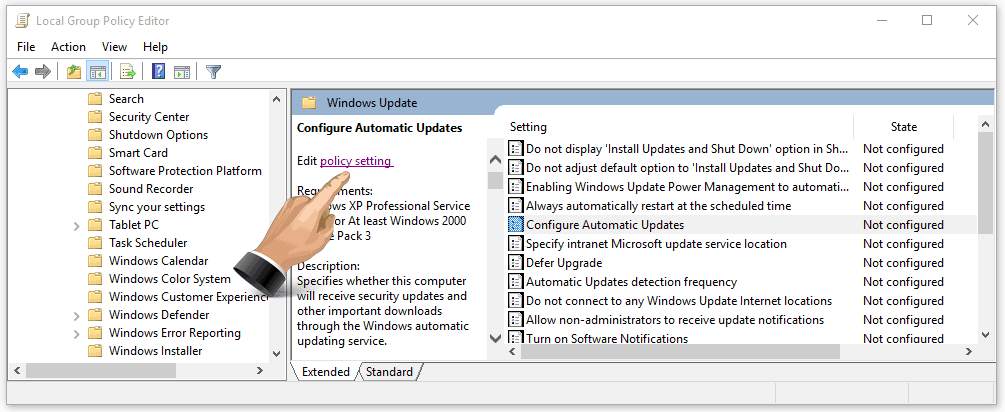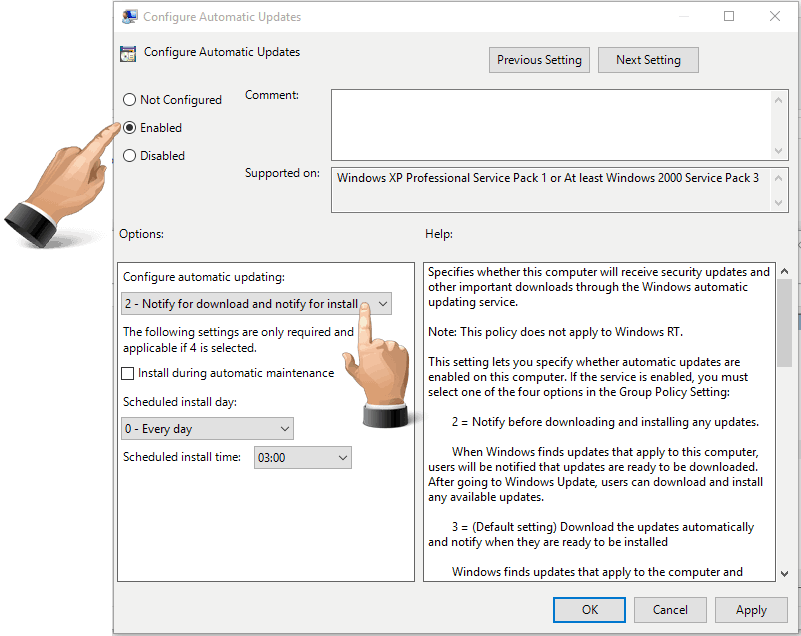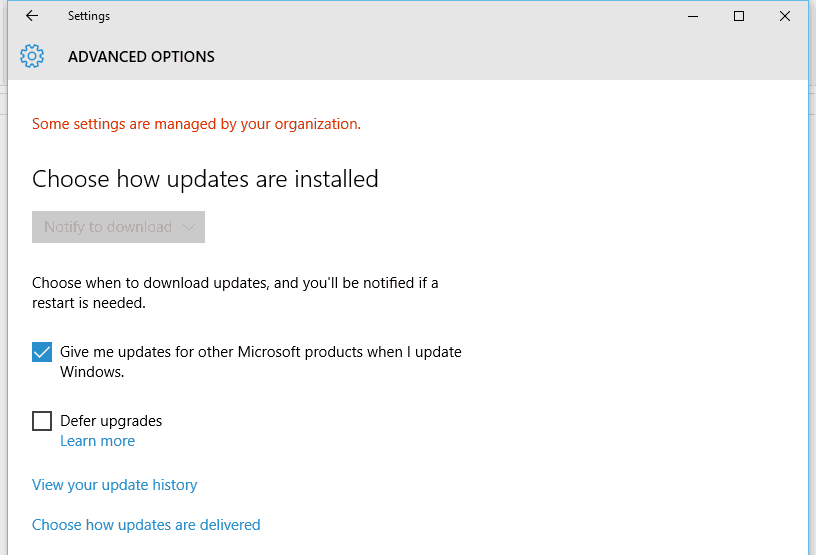I understand why Microsoft would think it’s a good idea to force us to keep Windows 10 up-to-date, but for some of us, data is expensive. Fortunately, there is a way to disable Windows 10 Updates from downloading constantly in the background. If you are running Windows 10 Home Edition, this trick will not work. This only works with Windows 10 Professional and Enterprise Editions.
Disable Windows 10 Updates in Group Policy Editor
We will be using Group Policy Editor to disable Windows 10 updates. To access it; press the Windows + R keys to access the Run dialog. In the Run dialog type gpedit.msc and press Enter.

On the Local Group Policy Editor windows, navigate to Computer Configuration > Administrative Templates > Windows Components > Windows Updates. Click on the Edit policy setting to open the Configure Automatic Updates dialog.

On the Configure Automatic Updates dialog, select Enabled in the left pane, in the Options section click on the Configure Automatic Updating Combo Box and in the dropdown list select Notify for download and notify for install.

This policy specifies whether this computer will receive security updates and other important downloads through the Windows automatic updating service.
This setting lets you specify whether automatic updates are enabled on this computer. If the service is enabled, you must select one of the four options in the Group Policy Setting:
2 – Notify before downloading and installing any updates. When Windows finds updates that apply to this computer, users will be notified that updates are ready to be downloaded. After going to Windows Update, users can download and install any available updates.
3 – (Default setting) Download the updates automatically and notify when they are ready to be installed. Windows finds updates that apply to the computer and downloads them in the background (the user is not notified or interrupted during this process). When the downloads are complete, users will be notified that they are ready to install. After going to Windows Update, users can install them.
4 – Automatically download updates and install them on the schedule specified. Specify the schedule using the options in the Group Policy Setting. If no schedule is specified, the default schedule for all installations will be every day at 3:00 AM. If any updates require a restart to complete the installation, Windows will restart the computer automatically. (If a user is signed in to the computer when Windows is ready to restart, the user will be notified and given the option to delay the restart.) On Windows 8 and later, you can set updates to install during automatic maintenance instead of a specific schedule. Automatic maintenance will install updates when the computer is not in use, and avoid doing so when the computer is running on battery power. If automatic maintenance is unable to install updates for 2 days, Windows Update will install updates right away. Users will then be notified about an upcoming restart, and that restart will only take place if there is no potential for accidental data loss. Automatic maintenance can be further configured by using Group Policy settings at Computer Configuration > Administrative Templates > Windows Components > Maintenance Scheduler.
5 – Allow local administrators to select the configuration mode that Automatic Updates should notify and install updates. With this option, local administrators will be allowed to use the Windows Update control panel to select a configuration option of their choice. Local administrators will not be allowed to disable the configuration for Automatic Updates.
No, Let’s disable Windows 10 updates: If the status for this policy is set to Disabled, any updates that are available on Windows Update must be downloaded and installed manually. To do this, search for Windows Update using Start. If the status is set to Not Configured, the use of Automatic Updates is not specified at the Group Policy level. However, an administrator can still configure Automatic Updates through Control Panel.
Make sure Windows 10 updates is Disabled
If this policy is set to Disabled; when you open Settings > Update & Security > Windows Update > Advanced Options, you will find a greyed out Notify to download button and a notification reading Some settings are managed by your organization.

When this policy is set to Disabled, you will still receive a notification when updates are available from where you will be able to manually download and install Windows 10 updates.
Sources
- How to Delay and Block Mandatory Software Updates in Windows 10 from GuidingTech.com
- Make Windows 10 notify you before downloading or installing Windows Updates from TheWindowsClub.com
